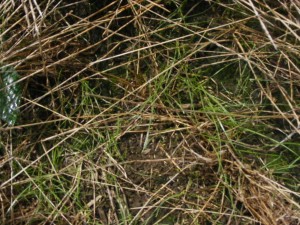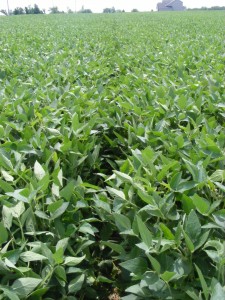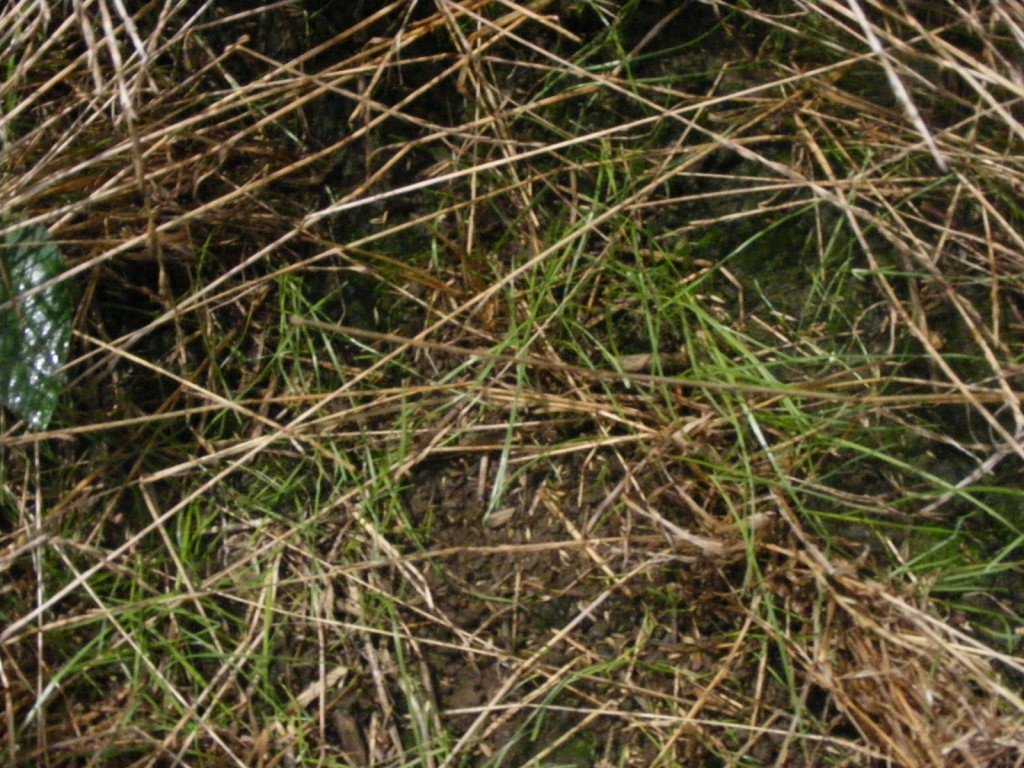

Today, August 3, 2010 I visited some fields in Whitley County Indiana to look at fields where annual ryegrass was not killed quite perfectly this spring. Even though the soybeans look awesome there is a problem lurking under the bean canopy. That problem is a fairly thick stand of annual ryegrass. I found ryegrass in the 2-5″ tall range. My guess is that in one field we checked that there is close to 10-15#/acre seeding rate equivalent. The grass is relatively thick in many areas. While the beans are planted in 15″ rows there is still enough sunlight hitting the ground to keep the ryegrass growing and green. The biggest problem is yet to come when the beans start to drop their leaves and the ryegrass gets more sunlight and takes off growing more quickly. On thing about annual ryegrass…it loves Nitrogen and the soybeans are providing plenty for it. I’m afraid that the ryegrass could be 2-3 feet high at harvest time…making for a “fun” harvest.
This is why it is so vital that annual ryegrass is “killed dead” in the spring. Count on two applications of glyphosate. More will come on this in a later post.

What do you think?
i have seen this in several fields before especially in soybeans. one field the producer let the ryegrass go to seed before planting the soybeans to get the volunteer stand. the stand was much thicker than your field. what surprised me was that by harvest all the ryegrass had died. there was virtually no ryegrass going into winter. the other fields that i had looked at also had no ryegdrass by harvest of the soybeans
Is this ryegrass that never died but was burned down and came back, or newly germinated seed?
Mike, we’ll keep watch on the field. I talked to another producers today that has a “mess” in his fields right now because of ARg. I know it’s a Cadillac cover crop…but some folks are thinking it’s a Yugo becasue they had trouble killing it this spring.
Erik,
It was from seed that came from plants that didn’t get killed in time this spring.
What do you think?
Another thing to consider is that there is a certain percentage of annual ryegrass seed that is dormant for a year or two and then germinates. I have personally seen fields where I KNOW the ARG was absolutely dead and new plants from seed pop up in subsequent years. It’s normally not alot of plants and in a C-B rotation with RR crops, is treatable. BUT, in wheat, it rrequires an expensive additional herbicide to keep the scattered plants from going to seed. ARG is great stuff and has a definite place, but NOT in rotations with small grains (Mike Plumer warned me about this years ago, but I didn’t believe him – sorry, Mike)
Are other herbices effective on ryegrass beside glyphosate? Just don’t want to speed up resistance, or does the grass inhibit weed growth as well? Looking into cover crops for our farm in northern Indiana on a corn/bean rotation.
This past year we had 2 fields using annual ryegrass in Sullivan county Indiana one went 60 bpa the other 70 . We do not mess around when we go to kill it 2x rate of glyphosate with ph reducer and it works may still have some touch ups but not bad . Hang in there and good things will happen
What was the outcome with the volunteer ARG by soybean harvest?
Hi Mark, The field had some ARg in it at harvest but very little compared to what it looked like it may have had. After harvest though the field was a nice carpet of volunteer ARg again. So the cycle continued but only wheat that had ARg in it ended up being a “problem”. Thanks for the reminder to follow up!